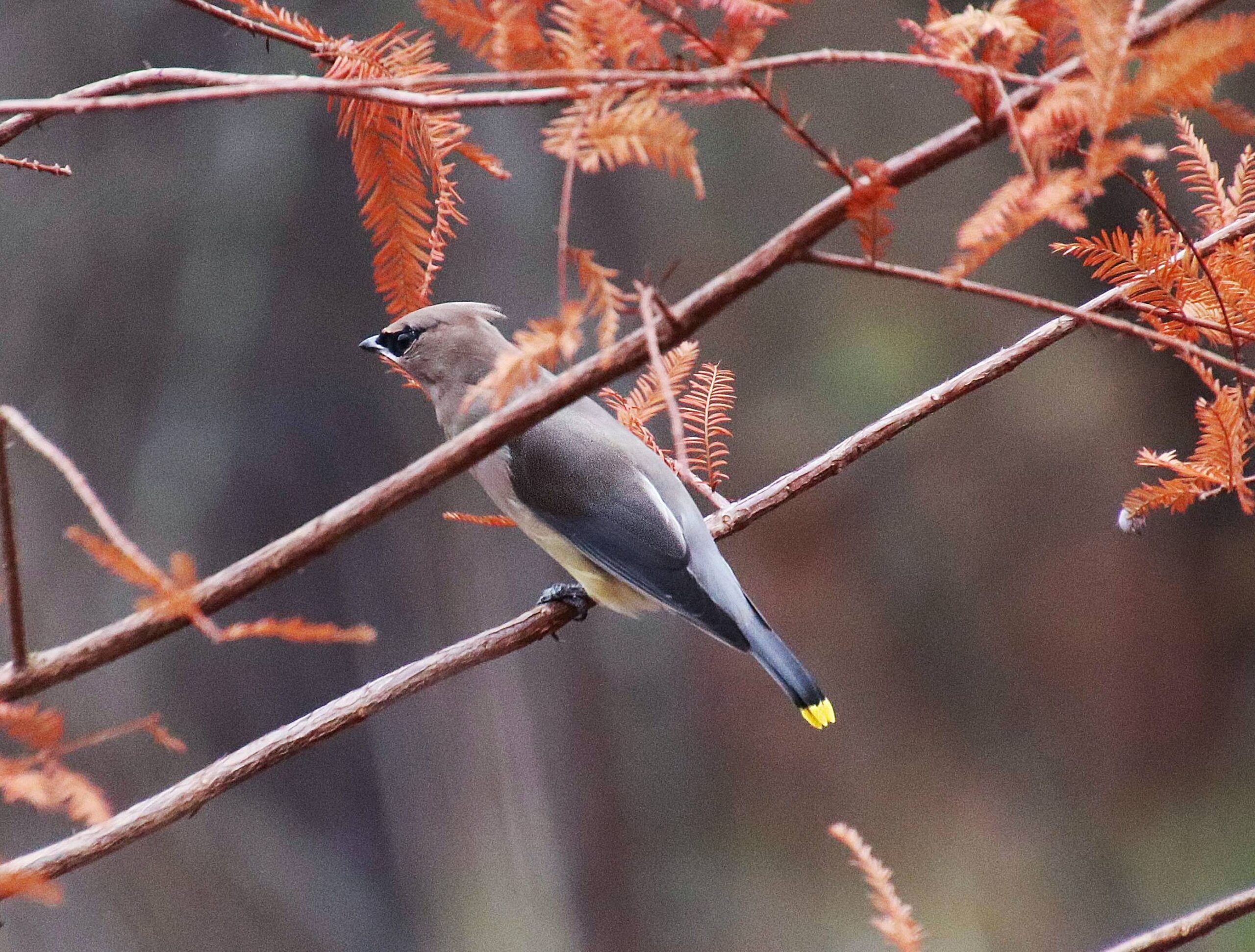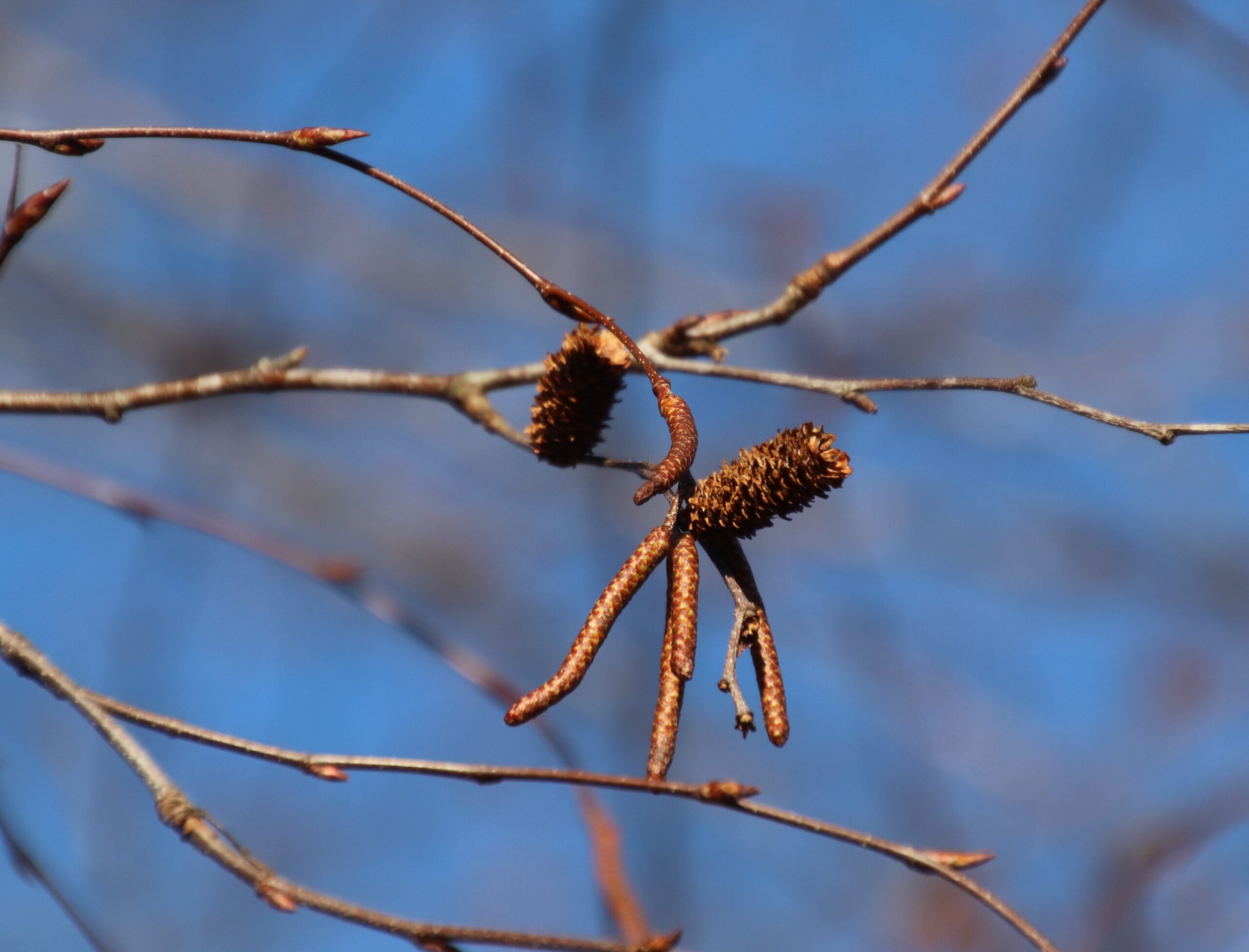Happy Mystery Monday! The answer to last week’s mystery is cedar waxwing, Bombycilla cedrorum, pictured here.

The cedar waxwing is small in size, landing somewhere between a sparrow and robin. They are native to North America. Male and female cedar waxwings look alike. Their bellies are pale yellow, and their tails are gray with a bright yellow tip. Their faces have a narrow black mask neatly outlined in white, and they have red waxy tips on their wing feathers.
Cedar waxwings are sociable, and often groom each other. They travel in flocks of 40 or more birds. Waxwings are mostly frugivorous, or fruit eaters. Occasionally a cedar waxwing will become drunk or even die from eating berries that have fermented. Male waxwings court the females by doing a hopping dance and passing berries or pieces of fruit to the female. If the female is interested, she will do a hopping dance and pass the fruit or berry back to the male.
The female cedar waxwing lays four to six eggs. The male will bring her food and guard the nest while she incubates the eggs. Both parents feed the chicks.

Guess what this is!
Adkins Mystery Monday is sponsored by the Spy Newspapers and Adkins Arboretum. For more information go here.


Write a Letter to the Editor on this Article
We encourage readers to offer their point of view on this article by submitting the following form. Editing is sometimes necessary and is done at the discretion of the editorial staff.